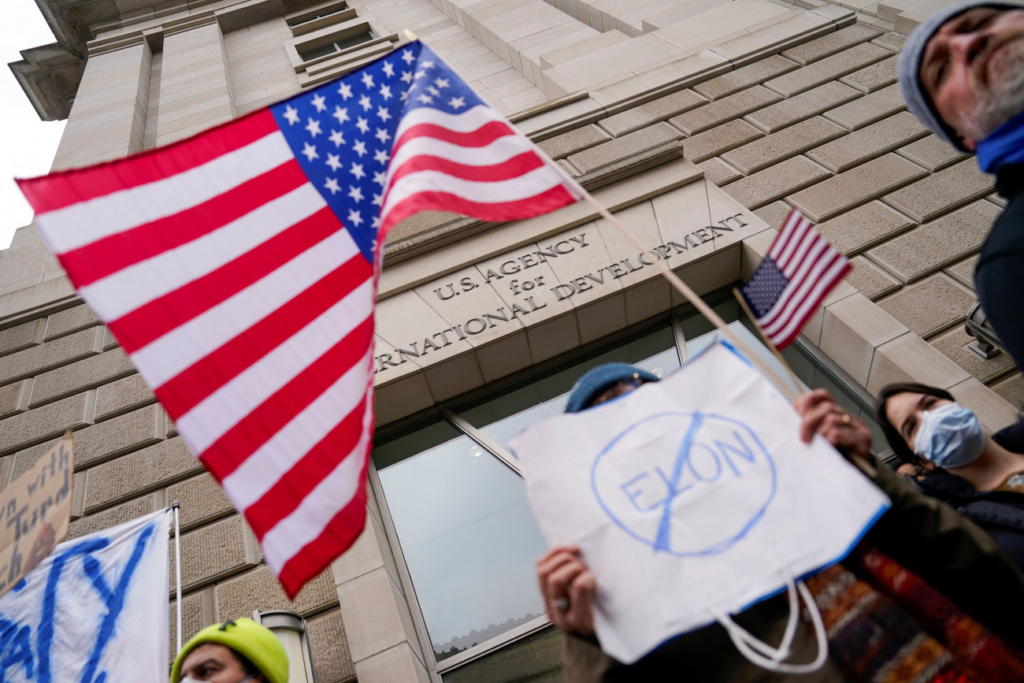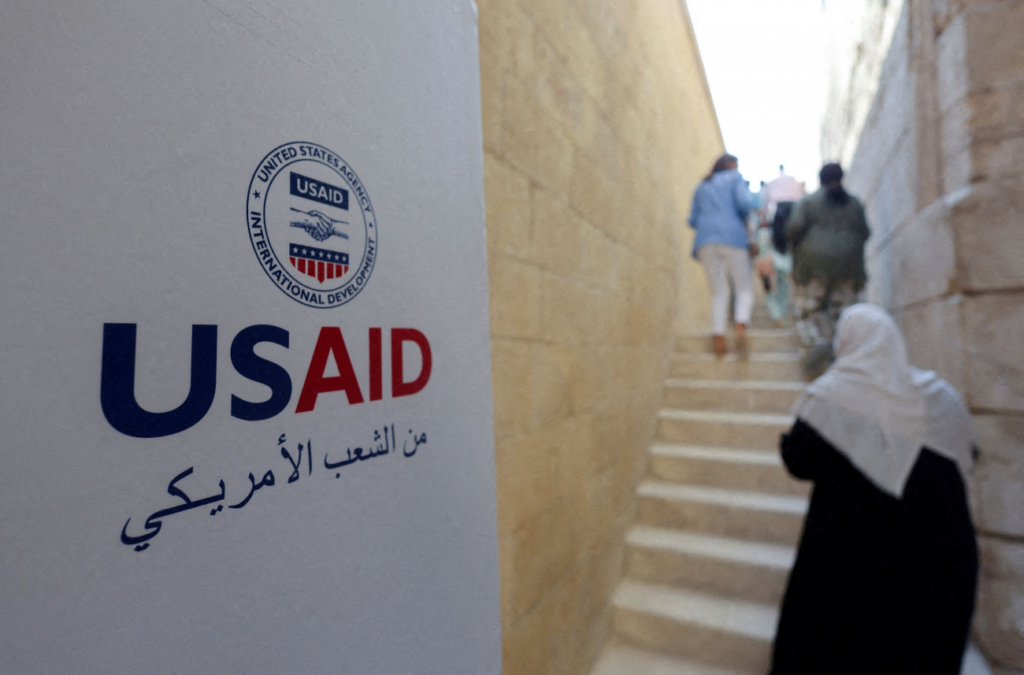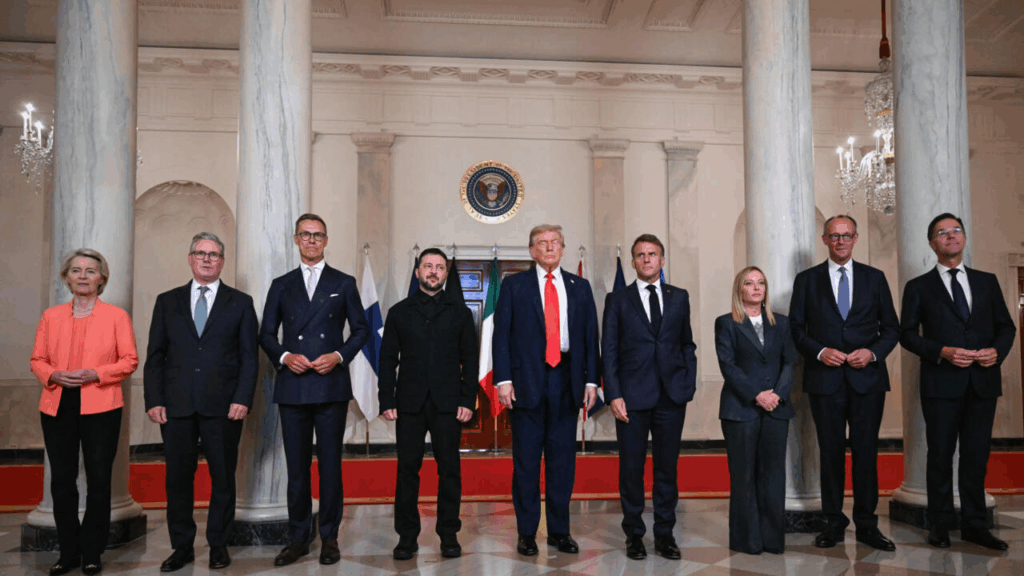Dozens of senior officials have been placed on leave. Thousands of contractors have been laid off while billions of dollars in humanitarian aid to other countries have been frozen. The reason is USAID.
In the past two weeks, President Donald Trump’s administration has made significant changes to the US agency responsible for providing humanitarian aid abroad, leaving aid organizations worried about whether they can continue programs such as nutritional support for malnourished infants and children.
During the Cold War, John F. Kennedy established the United States Agency for International Development, known as USAID. In the decades that followed, Republicans and Democrats fought over the agency and its funding.
What is USAID?
Kennedy created USAID at the height of the Cold War between the United States and the Soviet Union. He wanted a more effective way to counter Soviet influence abroad through foreign aid and found the State Department frustratingly bureaucratic in doing so.
Congress passed the Foreign Assistance Act, and Kennedy created USAID as an independent agency in 1961.
Today, USAID supporters argue that American aid to countries counterbalances Russian and Chinese influence internationally. China has its own “Belt and Road” foreign aid program worldwide that is active in many countries that the United States also wants as partners.
Critics say the programs are wasteful and advance a liberal agenda.
What’s happening to the agency?
On his first day in office, January 20, Trump imposed a 90-day freeze on U.S. foreign aid. Four days later, Peter Morocco, a political appointee returning from Trump’s first term, drafted a harsher-than-expected interpretation of the order, a move that has shuttered thousands of programs around the world and forced layoffs and other actions.
Secretary of State Marco Rubio has since moved to keep more emergency programs open during the freeze. Confusion over which programs are exempt from the Trump administration’s shutdown orders—and fears that U.S. aid could be permanently lost—continues to freeze aid and development work around the world.
Dozens of senior officials have been suspended, thousands of contractors have been laid off, and employees were told Monday not to enter its Washington headquarters. At the same time, both USAID’s website and its X platform account were taken down.
Rubio said the administration’s goal is to examine each program individually to see which projects make “America safer, stronger or more prosperous.”

What do critics say?
Republicans typically push to give the State Department—which provides overall foreign policy guidance to USAID—more control over its policy and budget. Democrats typically promote USAID’s autonomy and authority.
Funding for United Nations agencies, including peacekeeping, human rights, and refugee organizations, has been a traditional target for Republican administrations to cut. The first Trump administration moved to reduce foreign aid spending, suspending payments to several UN agencies, including the UN Population Fund and funding to the Palestinian Authority.
During Trump’s first term, the United States withdrew from the UN Human Rights Council and its financial obligations to that body. The U.S. is also barred from funding the U.N. agency for Palestinian refugees, or UNRWA, under a bill signed by then-President Joe Biden last March.
As a Florida senator, Rubio has often called for greater transparency in foreign aid spending but has generally been supportive. In a 2017 social media post, Rubio said foreign aid “is not charity,” that the U.S. “must make sure it’s spent properly,” and called it critical to U.S. national security.
In 2023, Rubio sponsored a bill that would require U.S. foreign aid agencies to include more information about which organizations are implementing aid on the ground.
Now, amid the turmoil, Marco Rubio announced Monday that he is now the acting administrator of the U.S. Agency for International Development, telling reporters that many of the agency’s programs will continue under the State Department, but blaming the change on high levels of “insubordination” among its employees.
Why is Elon Musk “going after” USAID?
Musk’s Department of Government Efficiency, known as DOGE, has launched a sweeping effort authorized by Trump to lay off government employees and cut trillions in government spending. USAID is one of its primary targets.
Musk claims that USAID funding was used to fund deadly programs and has called it a “criminal organization.”
What is the impact of the freeze?
Sub-Saharan Africa could suffer more than any other region during the aid freeze. The United States gave the region more than $6.5 billion in humanitarian aid last year. HIV-positive patients in Africa who arrived at clinics funded by a well-known U.S. program that helped fight the global AIDS epidemic in the 1980s found the doors locked.
There are already repercussions in Latin America. In Mexico, a crowded migrant shelter in southern Mexico was left without a doctor. Meanwhile, a program to provide mental health support to LGBTQI+ youth fleeing Venezuela was dismantled.
In Colombia, Costa Rica, Ecuador and Guatemala, so-called “Secure Mobility Offices” where migrants can apply to enter the US legally have been closed.
How much does the US spend on aid programs?
Overall, the US spent about $40 billion on foreign aid in fiscal year 2023, according to a report released last month by the nonpartisan Congressional Research Service.
The US is the world’s largest provider of humanitarian aid, although some other countries spend a larger portion of their budgets on it. Foreign aid overall amounts to less than 1% of the US budget.
What do Americans think about foreign aid?
About 6 in 10 U.S. adults said the government was spending “too much” on aid programs, according to a March 2023 AP-NORC poll. When asked about the specific costs, about 7 in 10 U.S. adults said the government spent too much money to provide aid to other countries.
About 9 in 10 Republicans and 55% of Democrats agreed that the country was spending too much on foreign aid. At the time, about 6 in 10 U.S. adults said the government was spending “too little” on domestic issues that included education, health care, infrastructure, Social Security and Medicare.
Polling has shown that U.S. adults tend to overestimate the share of the federal budget spent on foreign aid. Surveys by the Kaiser Family Foundation found that on average, Americans say spending on aid programs in other countries makes up 31% of the federal budget, not more than 1% or less.

Could Trump dismantle USAID on his own?
Democrats say presidents don’t have the constitutional authority to eliminate USAID. But it’s not clear what would stop Donald Trump from trying.
A mini-version of this legal battle took place in Trump’s first term, when he tried to cut the budget for foreign operations by a third.
When Congress refused, the Trump administration used freezes and other tactics to cut off the flow of funds already appropriated by Congress for aid programs in other countries. The U.S. Government Accountability Office later ruled that it violated a law known as the Impoundment Control Act.
“May you live and die by executive order,” Musk told X on Saturday regarding USAID.







